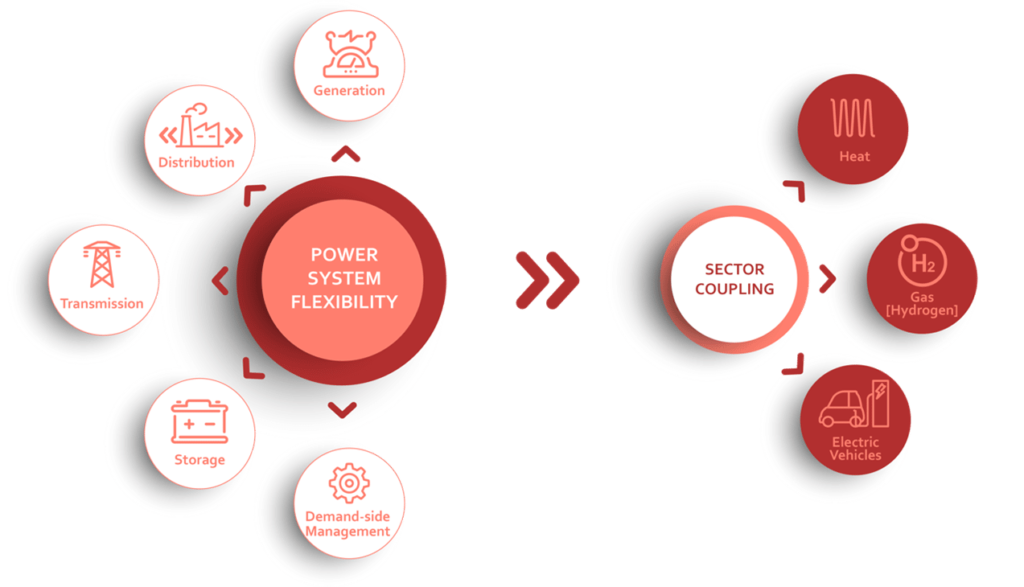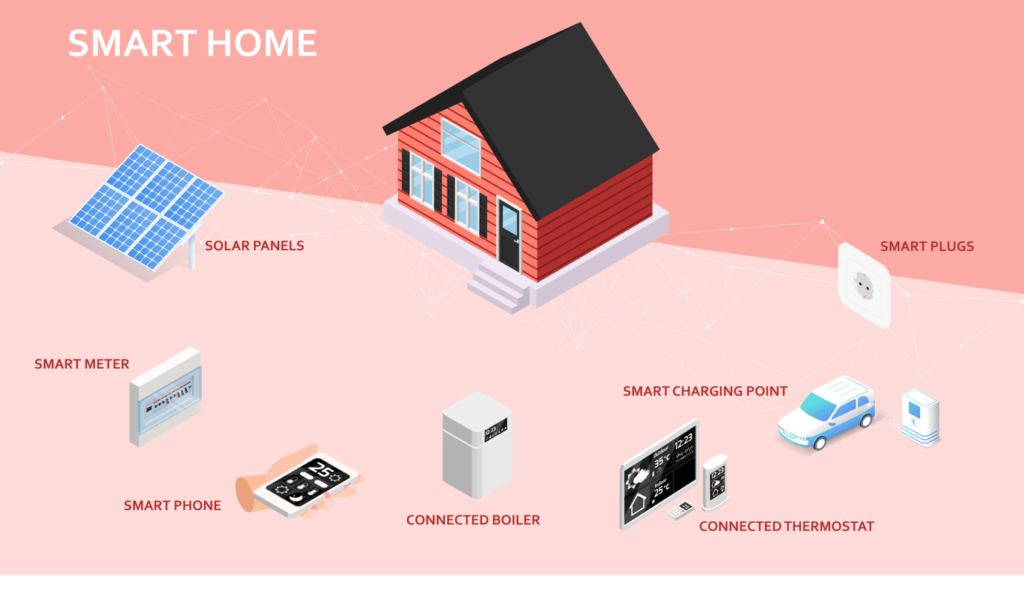Renewable energy is playing a major role in transforming the energy sector towards a cost-effective, low-carbon, and sustainable future. A rapid decline in the cost of solar and wind power generation is leading this energy transition.
However, a sharp growth of renewable energy generation is needed further to meet the objectives. As an illustration, the share of renewable electricity should be 85% of the total electricity generation to meet the climate objectives mentioned in Paris Agreement 2015 (IRENA, 2019).
Therefore, other potential solutions need to be explored.
In this regard, appropriate utilization of Information and Communications Technology (ICT) which is already being explored in transforming several domains like smart cities, e-Health, smart buildings and industries can play a crucial role in a renewable-powered future.
Flexibility and Renewable-Powered Future
The developments in the renewable energy sector bring several challenges that are mainly associated with the variable generation of renewable power, especially regarding wind and solar. The main reason behind Variable Renewable Energy (VRE) is uncertainty in weather and its forecasting.

To deal with variability and uncertainty, flexibility needs to be explored at different levels like supply-side flexibility, Grid flexibility, system-wide flexibility and demand-side flexibility. An illustration of power system flexibility from several potential levels and its coupling with different sectors is presented in Figure 1.
Insufficient flexibility might result in several issues like load shedding and VRE curtailment. Thus, flexibility is the capability of a power system to cope with the variability and uncertainty that VRE generation introduces into the system in different time scales, from the very short term to the long term, avoiding curtailment of VRE and reliably fulfilling the energy demand to the customers (TAIBI et al., 2018).
Role of AI and IoTI
Innovation can play a critical role to increase flexibility in a renewable-powered future, particularly the ICT tools. With the advancement in digital services, it is expected that a total of 75 billion electrical devices would be connected worldwide and share their data with consumers, manufacturers and utility providers (BRIEF, 2019).
An illustration of Internet of Things (IoT) devices in a smart home is presented in Figure 2.

Big data collected from IoT devices can be fed into the machine learning algorithms to extract crucial information which can further help in automation and decision-making in the context of flexibility improvement and its resilient coupling.
Several companies in different sectors have been utilizing the benefits of IoT and Artificial Intelligence (AI), and the energy industry is no different. The services of AI and IoT can be utilized in weather forecasting, energy consumption, and demand prediction and thus can improve flexibility at different levels and decrease uncertainty.
Some examples of the utilization of AI and IoT in intelligent power consumption management are:
- EWeLiNE: a machine learning-based software used in Germany. It uses artificial intelligence and data from solar sensors, wind turbine sensors and weather forecasts to predict power generation. Therefore, it results in the successful integration of renewable energy systems while minimising losses due to surplus power generation and power shedding.
- Utopus Insights: a company based in New York and India that is focused on improved forecasting for the electrical grid using machine learning.
AI and IoT have immense capacity to make the future of renewable energy robust and reliable and lead to the achievement of sustainable goals.
Relevant Projects at Smart Innovation Norway
- HouseholdFlex: To explore the possibility of introducing flexibility at the end-user level by predicting energy consumption patterns in smart homes.
- AI Battery Optimizer: To integrate battery storage for improving flexibility in domestic and industrial energy systems by developing AI algorithms.
- IntHydro: Developing an intelligent tool for optimal hydroelectric energy production and sale to cater for the transfer of results to other energy sectors such as oil and gas by utilizing AI and Machine Learning tools.
References
- BRIEF, I. L. Internet of things. 2019.
- IRENA. Innovation landscape for a renewable-powered future: solutions to integrate variable renewables. [S.l.]: International Renewable Energy Agency Abu Dhabi, United Arab Emirates, 2019.
- TAIBI, E. et al. Power system flexibility for the energy transition: Part 2, irena flextool methodology. 2018.

Contact
Surender Redhu
surender.redhu@smartinnovationnorway.com
